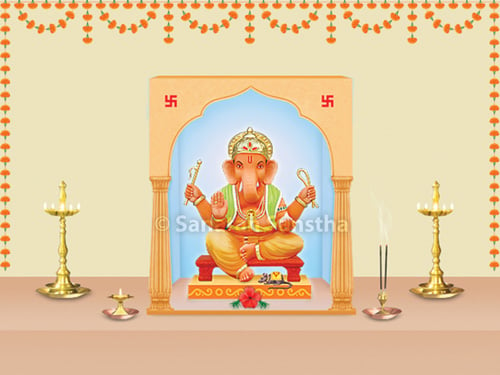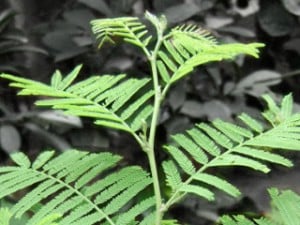
Since Shri Ganesh is the Vighnaharta, meaning, vanquisher of obstacles, it is customary to worship Him before commencing any auspicious task. There is a specific science in the worship of every Deity. In other words, there is a science in performing every ritual in a specific manner in the worship of each Deity. Performing the rituals in a specified manner helps derive maximum benefit of the Deity’s Principle. Knowledge of the spiritual science-based information pertaining to a Deity helps increase the faith in that Deity. Faith helps induce bhav in the ritualistic worship, and worship done with bhāv is always more fruitful. This article gives thes details of Specific substances used in the ritualistic worship of Shri Ganesh – why durva (A fragrant grass) and red flowers are offered to Gaṇapati; method of offering durva and its length and number; Shami (Mesquite) leaves, Modak etc.
The Divine Knowledge received by Sanatan’s seekers by the grace of God on how to precisely perform some of the rituals in the worship of Shri Ganesh is given in the following table.
| No | Act of worship | Knowledge obtained about the act performed | |
|---|---|---|---|
| 1 | How should the worshipper apply gandha to himself before Shri Ganesh puja ? | Apply with the madhyams (Middle finger) in a straight line on the Adnya-chakra | |
| 2 | Which finger should be used for application of gandha to Sri Ganapati | Anamika (Ring finger) | |
| 3 | Offering flowers | ||
| A. Which flowers should be offered? | Red flowers and shoe flower | ||
| B. How many flowers should be offered ? |
Eight and multiples of eight | ||
| C. How should the flowers be offered ? | The flowers should be offered with the stalks facing the Deity | ||
| D. How should the flowers be arranged ? | Flowers should be offered in a diamond shape | ||
| 4 | Waving with udbatti (Incense-stick) | ||
| A. Which fragrance of udbatti should be used for worship that is tarak (Saviour) in nature ? | Chandan, kewada, chameli and vala | ||
| B. Which fragrance of udbatti should be used for worship that is marak (Destroyer) in nature ? | Heena and darbar | ||
| C. In what numbers ? | Two | ||
| D. What should be the method of waving Arati ? | Moving in a circular motion three times in a clockwise direction by holding between thumb and index finger | ||
| 5 | Which fragrance should be offered | Heena | |
| 6 | What should be the number of circumambulations performed around Shri Ganesh | Minimum eight and increasing in multiples of eight | |
Shri Ganesh Chaturthi Video
1. Durva
Durva, a sacred grass, has special significance in the ritualistic worship of Shri Ganapati. This article explains reasons for offering durva to Shri Ganapati, what should the durva be like, what should be the number of durva offered, method of offering durva etc. Read more
2. Shami (Mesquite) leaves

The shami tree has the presence of Agnidevata (Deity of Fire). The Pandavs had kept their weapons in the hollow of a shami tree to retain their radiance. Sticks of shami are used for creating fire by friction.
3. Mandar (Coral) leaves
There is a difference between rui (Cotton) plants and mandar (Coral) trees. The fruits of rui are coloured while those of mandar are white. Just as mercury is a chemical among medicines, coral is a medicine among trees.
4. Red substances
The complexion of Shri Ganapati is red. Red clothes, red flowers and raktachandan (Red sandalwood) are used in His ritualistic worship. The red colour of these substances attracts pavitraks of Shri Ganapati in the atmosphere to the Idol in a greater proportion and helps in its awakening. Since this is difficult to understand, the subject is concluded by saying that Shri Ganapati loves red cloth, red flowers and red sandalwood.
5. Modak
Just as the durva offered unto Shri Ganapati is twenty-one in number, so also Naivedya of twenty-one modaks is offered.
6. Naivedya of kheer
On the day following Shri Ganesh Chaturthi, that is, on Rushipanchami, the mouse, which is the vehicle of Shri Ganapati, is offered Naivedya of kheer.
Reference : Sanatan Sanstha’s Holy text ‘Shri Ganapati’.


